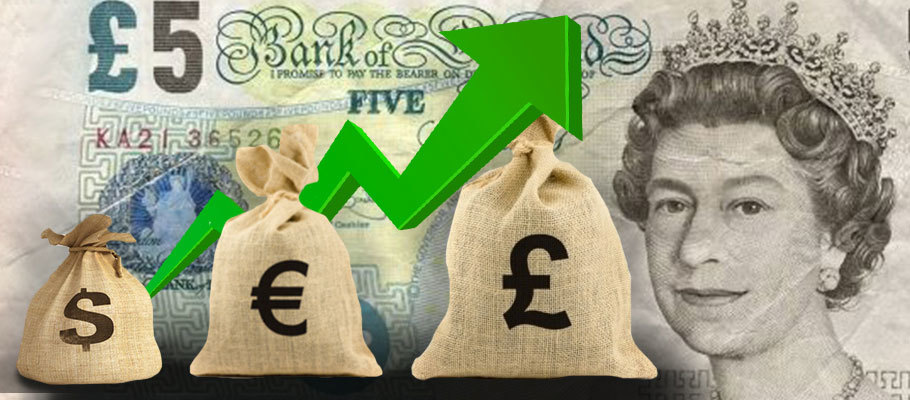
Published: May 14th, 2021
The pound will likely hold onto most of the gains it logged against the dollar, euro, and other majors this week as analysts predict more scope for further advances.
Sterling started rising in value at the end of last week’s session on a mix of fading political risks out of Westminster and continuing re-price momentum driven by a changing monetary policy footing from the Bank of England.
Given the UK’s ongoing economic rebound, BoE policymakers have become more hawkish. The result has been strong demand for sterling by investors and corporates, something analysts at the Bank of America say could keep going.
"After robust demand for GBP earlier this year, recent flows have been a lot lighter. Now we see a more hawkish Bank of England, mixed with results from last week’s elections that point to political stability. It should all combine to deliver more GBP upside, in our view.’
Forex strategists at Citi have chimed in, telling Reuters this week that’s they’ve seen an upsurge in ‘fast money’ players buying sterling in droves, following news that the separatists Scottish National Party (SNP) failed to gain an outright majority in last week's elections, likely staving off the threat of a new independence referendum this year.
The bank’s spot trading desk has been telling clients that it sees a ‘very low risk of a second referendum’ in the near term, meaning price action will be driven by the impact of re-opening and liberalising commercial activity again post-COVID.
Echoing that sentiment, the GBP/EUR exchange rate saw its biggest one-day gain in a year this week when demand for the pound rose on diminishing Scottish political risks.
The pound had previously failed to advance in the wake of the BoE’s May 06 announcement that it would reduce its QE programme while upgrading its economic forecasts. The Scottish elections gave markets time to absorb that news and settle on new valuations.
With the SNP falling short of a majority, markets have refocused attention on fully pricing in the more positive narrative the Bank of England has offered on sterling, a story that might run further in short-term forex bets.
The GBP/USD exchange rate rose 0.93 per cent at the start of the week and added a further 0.19 per cent at mid-week, touching a multi-week high of 1.4157, with gains arriving from a mix of real pound demand supported by a broader aversion to buying dollars.
Analysts at Bank of America also think the dollar may be in for a bumpy ride for the immediate future.
‘Our most recent proprietary flows are trending negative for the greenback. Hedge funds are selling dollars across the board, while both official and corporate dollar flows have gone turned negative over the past few weeks,’ BofA analysts said in a briefing note this week.
The UK's economic rebound is also expected to hot up next week when the government’s third phase release from commercial lockdown occurs.
Economic activity is forecast to grow as the hospitality sector benefits from a return to near-normal operating conditions; for example, cinemas can re-open, indoor dining will be allowed again, and university students will be allowed to return to campus for in-personal classroom instruction.
‘With Westminster confirming the next phase of re-opening, strong UK data means this quarter’s results should support more GBP gains,’ says BofA.
Citi’s forex strategists say they see momentum extending as the pound has been able to keep robust gains posted at the start of this week's session. With the SNP failing to score a majority, the rally for GBP/USD is justified, they say.
Until the SNP obtain a ‘super-majority in Holyrood, CitiFX says the risk of a second Scottish independence referendum is off the table for now. And even if the Johnston government was to allow an ‘IndyRef2’ to take place (the last one only happened in 2014), Citi's base case suggests the path to impendence would only be open after the UK’s pandemic recovery concludes, a milestone currently forecast to happen in 2024.
GBP will also be buoyed by the news this week that exports to the EU look to have recovered in March, eliminating fears that the new post-Brexit trade relationship would do trade with the continent irreparable harm
Numbers from the Office of National Statistics (ONS) show that UK goods bought by EU importers grew by 8.5 per cent, or more than a billion pounds in the previous month, driven mainly by car-related exports.
Total exports of goods grew in March 2021, with boosts seen in both EU and non-EU county trading.
‘Upset stemming from the late arrival of the EU-UK trade agreement in January looks to have eased off,’ said economists at NG Bank.
The ONS numbers suggest that Britain’s trade position with the rest of the world is on the up and should reduce fears that the UK’s long-term current account deficit is going to get worse post-Brexit.
One notable and unexpected number was included in the ONS data release is that Britain imported more goods from non-EU countries than from the EU in Q1 of 2021. That’s the first time this has occurred since records began being kept in January 1997.
The ONS trade statistics release showed that goods purchased from non-EU countries, not including precious metals like gold or platinum, grew by £1.4 billion or 8.3 per cent in March 2021. The growth was driven mainly by clothing imports.
Meanwhile, imports of products and services from EU countries, not including precious metals, were at £0.8 billion, or 4.5 per cent in March.
The jump in exports means the United Kingdom posted a smaller-than-forecast trade deficit in March, coming in at negative -£11.70 billion, or less than the -£14.30 billion markets were expecting.
Britain’s trade balance with non-EU countries rose to negative -£6.50 billion in March, which was more than markets anticipated.